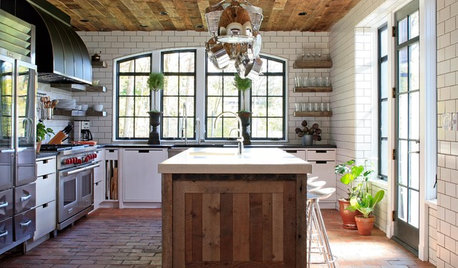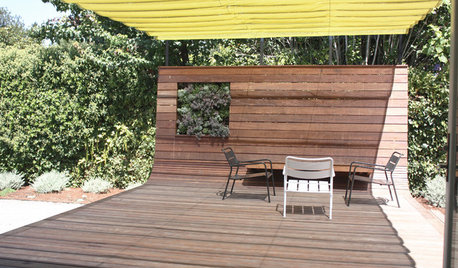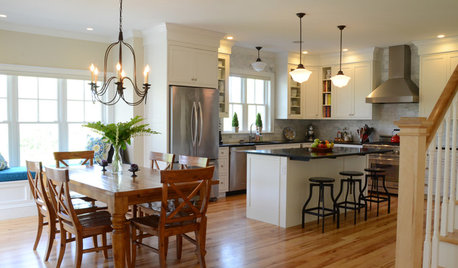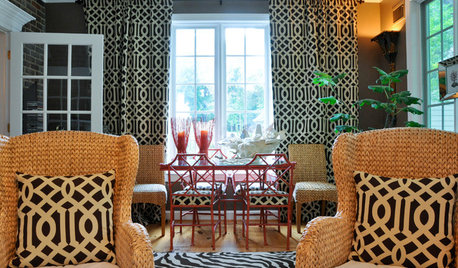What about using a pool for water source HPs
david_cary
14 years ago
Related Stories

PAINTINGWhat to Know About Milk Paint and Chalk Paint — and How to Use Them
Learn the pros, cons, cost and more for these two easy-to-use paints that are great for giving furniture a vintage look
Full Story
KITCHEN DESIGNWhat to Know About Using Reclaimed Wood in the Kitchen
One-of-a-kind lumber warms a room and adds age and interest
Full Story
DECKSA Family-Friendly California Yard Wises Up About Water
Pavers and unthirsty plants replace Kentucky bluegrass in a Menlo Park landscape for a family of 4
Full Story
GREEN BUILDINGLet’s Clear Up Some Confusion About Solar Panels
Different panel types do different things. If you want solar energy for your home, get the basics here first
Full Story
WALL TREATMENTS8 Sources for Modern Ecofriendly Wallpaper
Give up nasty chemicals but not an ounce of good taste when you pick a wallpaper from a maker with an earth-friendly approach
Full Story
GREEN BUILDINGWhat's LEED All About, Anyway?
If you're looking for a sustainable, energy-efficient home, look into LEED certification. Learn about the program and its rating system here
Full Story
BUDGETING YOUR PROJECTHouzz Call: What Did Your Kitchen Renovation Teach You About Budgeting?
Cost is often the biggest shocker in a home renovation project. Share your wisdom to help your fellow Houzzers
Full Story
GREAT HOME PROJECTSWhat to Know About Adding a Reclaimed-Wood Wall
Here’s advice on where to put it, how to find and select wood, what it might cost and how to get it done
Full Story
FURNITUREUse Wicker and Rattan for a Tropical Flavor All Year Round
Find out more about what separates — and unites — these classic materials
Full Story
WORKING WITH PROSWhat Do Landscape Architects Do?
There are many misconceptions about what landscape architects do. Learn what they bring to a project
Full Story

youmust
david_caryOriginal Author
Related Professionals
Chatsworth Solar Energy Systems · Moreno Valley Solar Energy Systems · Alum Rock Solar Energy Systems · Newington Home Builders · Castaic Home Builders · Manassas Home Builders · Spanish Springs Home Builders · Lomita Home Builders · Albuquerque Roofing & Gutters · Georgetown Roofing & Gutters · Joliet Roofing & Gutters · Manchester Roofing & Gutters · Orlando Roofing & Gutters · Parker Roofing & Gutters · Toledo Roofing & Guttersgardurnit
david_caryOriginal Author